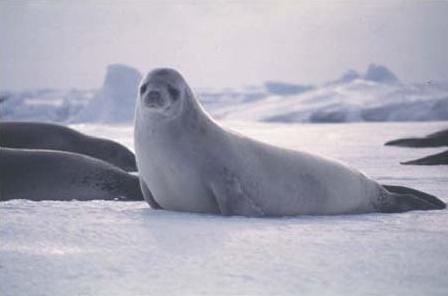
Turning up the heat New Zealand’s ocean in a warming world
Although seen many times, this marvellous Apollo 17 view of Africa, Antarctica and the Southern Ocean remains a symbol of the intimate link between the ocean and atmosphere. Powerful weather systems, outlined by swirls of white cloud, sweep eastward across the ocean. Winds within these systems create turbulent seas which help transfer greenhouse gases into one of the world’s major carbon stores, the ocean. Those wind-affected seas, aided by the general oceanic circulation, shift solar-heated and polar-cooled waters around the planet. Off New Zealand, these flows interact with the atmosphere to provide an equable maritime climate. But if this finely tuned interplay between sea and sky changed, how would we fare?
There is now wide recognition that the world’s climate is warming rapidly. Findings of the Intergovernmental Panel on Climate Change (IPCC) point to increases in surface air temperatures of 1.4° to 5.8°C over the next century. But these are globally averaged increases. One glimpse at the Apollo image shows that Earth is far from average, with the hot, arid brown triangle of Africa contrasting starkly with cold, white Antarctica. So what are the likely effects of increased warmth on small island nations such as New Zealand with their vast surrounds of open ocean? To answer such a question we need to combine the global perspective of IPCC with detailed regional knowledge. To that end, this special issue of Water & Atmosphere draws on the expertise of New Zealand climate and ocean scientists to present a local evaluation of the largest environmental issue facing humankind.
To set the scene, we discuss evidence and projections for climate change onshore. Next we use the “crystal ball” of modelling to foretell future climate. The Future Ocean combines the IPCC and New Zealand findings to open the window into the SW Pacific of the 21st Century and beyond (see page 4). These predictions are based on our understanding of how our ocean has responded in a past greenhouse world. Then, Lessons of the Past looks at environmental impacts during previous global warmings. Of key interest is the period after the last Ice Age when temperatures rose as much as 5–6°C. Finally, The Modern Ocean reviews our knowledge since the 1950s, about the time when reliable survey data became available. Such information, collected from ships and satellites, provides an unprecedented picture of a dynamic ocean shaped by the vagaries and fluctuations of climate. The seasons, El Niño–La Niña, and even volcanic “winters”, all leave their imprint on the oceanography. In fact, it is these short-term events that have dominated New Zealand waters for the last 50 years.
Continued research on the many aspects of our oceans covered in the following articles, and in previous issues of Water & Atmosphere, is essential to verify future computer models and to provide an even better understanding of the complexities of the global climate system.
Lionel Carter Editor, special issue NIWA, Wellington
